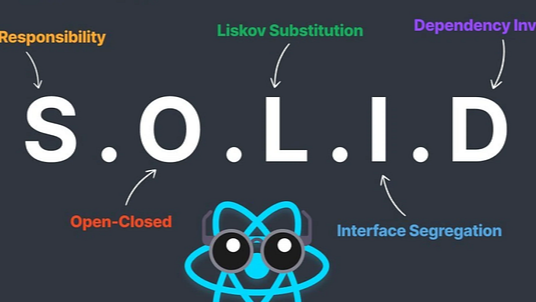
Interface Segregation Principle (ISP) in React
Alexandre Pereira
Software Engineer MERN | React.JS | Nodejs | Javascript | Typescript | MongoDB | GCP | Python
The Interface Segregation Principle (ISP) is a software design principle that states that no client should be forced to depend on methods it does not use. In other words, it's better to have many small, specific interfaces than a single, large, general-purpose one. This principle helps to reduce the impact of changes and makes the system more flexible.
Why ISP Matters in React
In React, ISP is particularly relevant when designing component interfaces, such as props and context. By keeping these interfaces focused and specific, you avoid bloated components and ensure that your code is easier to understand, test, and maintain.
ISP in Action: Splitting Component Props
Let’s say you have a UserProfile component that displays user information and also includes settings for user preferences. A poorly designed interface might bundle all these responsibilities into one, leading to a large and unwieldy prop list.
Example of a Bloated Component Interface:
In this example, the UserProfile component is responsible for displaying user information and handling user preferences. This violates ISP because not all clients using UserProfile may need to deal with preferences.
Refactoring for ISP:
To adhere to the Interface Segregation Principle, you should split the responsibilities by creating smaller, more focused components.
领英推荐
Now, the UserInfo component is only concerned with displaying user details, while the UserPreferences component handles preferences. This makes the interfaces smaller and more focused.
Using the Refactored Components:
By breaking down the responsibilities, you now have components that follow the ISP. Each component only requires the props that are necessary for its specific task.
Benefits of ISP
The Interface Segregation Principle helps to keep your React components lean and focused. This makes your code easier to understand, test, and maintain. If you need to change how preferences are managed, you can do so without touching the UserInfo component, reducing the risk of introducing bugs.
In summary, the ISP encourages you to design your React components with specific and focused interfaces. This leads to a more modular, maintainable, and scalable application.
really good!
Senior Software Engineer | Java | Spring | AWS
6 个月Tks for sharing
Really good examples!
Senior Java Software Engineer | Spring | Quarkus | Docker | Kubernetes | CI/CD
6 个月Great ! Very well explained!
Desenvolvedor Full Stack | C# | .NET Core| Javascript
6 个月Great article, I really liked it ??